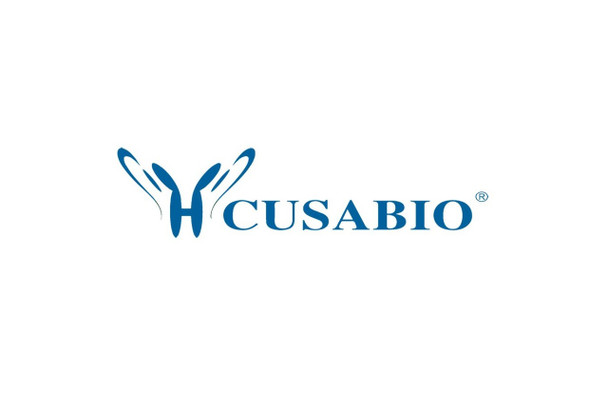Cusabio Human Recombinants
Recombinant Human Toll-like receptor 2 (TLR2), partial | CSB-EP023601HU1
- SKU:
- CSB-EP023601HU1
- Availability:
- 3 - 7 Working Days
Description
Recombinant Human Toll-like receptor 2 (TLR2), partial | CSB-EP023601HU1 | Cusabio
Alternative Name(s): Toll/interleukin-1 receptor-like protein 4; CD282
Gene Names: TLR2
Research Areas: Immunology
Organism: Homo sapiens (Human)
AA Sequence: KEESSNQASLSCDRNGICKGSSGSLNSIPSGLTEAVKSLDLSNNRITYISNSDLQRCVNLQALVLTSNGINTIEEDSFSSLGSLEHLDLSYNYLSNLSSSWFKPLSSLTFLNLLGNPYKTLGETSLFSHLTKLQILRVGNMDTFTKIQRKDFAGLTFLEELEIDASDLQSYEPKSLKSIQNVSHLILHMKQHILLLEIFVDVTSSVECLELRDTDLDTFHFSELSTGETNSLIKKFTFRNVKITDESLFQVMKLLNQISGLLELEFDDCTLNGVGNFRASDNDRVIDPGKVETLTIRRLHIPRFYLFYDLSTLYSLTERVKRITVENSKVFLVPCLLSQHLKSLEYLDLSENLMVEEYLKNSACEDAWPSLQTLILRQNHLASLEKTGETLLTLKNLTNIDISKNSFHSMPETCQWPEKMKYLNLSSTRIHSVTGCIPKTLEILDVSNNNLNLFSLNLPQLKELYISRNKLMTLPDASLLPMLLVLKISRNAITTFSKEQLDSFHTLKTLEAGGNNFICSCEFLSFTQEQQALAKVLIDWPANYLCDSPSHVRGQQVQDVRLSVSECHRT
Source: E.coli
Tag Info: N-terminal 6xHis-SUMO-tagged
Expression Region: 19-588aa
Sequence Info: Partial
MW: 80.4 kDa
Purity: Greater than 90% as determined by SDS-PAGE.
Relevance: Cooperates with LY96 to mediate the innate immune response to bacterial lipoproteins and other microbial cell wall components. Cooperates with TLR1 or TLR6 to mediate the innate immune response to bacterial lipoproteins or lipopeptides. Acts via MYD88 and TRAF6, leading to NF-kappa-B activation, cytokine secretion and the inflammatory response. May also promote apoptosis in response to lipoproteins. Recognizes mycoplasmal macrophage-activating lipopeptide-2kD (MALP-2), soluble tuberculosis factor (STF), phenol-soluble modulin (PSM) and B.burgdorferi outer surface protein A lipoprotein (OspA-L) cooperatively with TLR6.
Reference: A family of human receptors structurally related to Drosophila Toll.Rock F.L., Hardiman G., Timans J.C., Kastelein R.A., Bazan J.F.Proc. Natl. Acad. Sci. U.S.A. 95:588-593(1998)
Storage: The shelf life is related to many factors, storage state, buffer ingredients, storage temperature and the stability of the protein itself. Generally, the shelf life of liquid form is 6 months at -20?/-80?. The shelf life of lyophilized form is 12 months at -20?/-80?.
Notes: Repeated freezing and thawing is not recommended. Store working aliquots at 4? for up to one week.
Function: Cooperates with LY96 to mediate the innate immune response to bacterial lipoproteins and other microbial cell wall components. Cooperates with TLR1 or TLR6 to mediate the innate immune response to bacterial lipoproteins or lipopeptides
Involvement in disease:
Subcellular Location: Membrane, Single-pass type I membrane protein, Cytoplasmic vesicle, phagosome membrane, Single-pass type I membrane protein, Membrane raft
Protein Families: Toll-like receptor family
Tissue Specificity: Highly expressed in peripheral blood leukocytes, in particular in monocytes, in bone marrow, lymph node and in spleen. Also detected in lung and in fetal liver. Levels are low in other tissues.
Paythway: PI3K-Aktsignalingpathway
Form: Liquid or Lyophilized powder
Buffer: If the delivery form is liquid, the default storage buffer is Tris/PBS-based buffer, 5%-50% glycerol. If the delivery form is lyophilized powder, the buffer before lyophilization is Tris/PBS-based buffer, 6% Trehalose, pH 8.0.
Reconstitution: We recommend that this vial be briefly centrifuged prior to opening to bring the contents to the bottom. Please reconstitute protein in deionized sterile water to a concentration of 0.1-1.0 mg/mL.We recommend to add 5-50% of glycerol (final concentration) and aliquot for long-term storage at -20?/-80?. Our default final concentration of glycerol is 50%. Customers could use it as reference.
Uniprot ID: O60603
HGNC Database Link: HGNC
UniGene Database Link: UniGene
KEGG Database Link: KEGG
STRING Database Link: STRING
OMIM Database Link: OMIM









